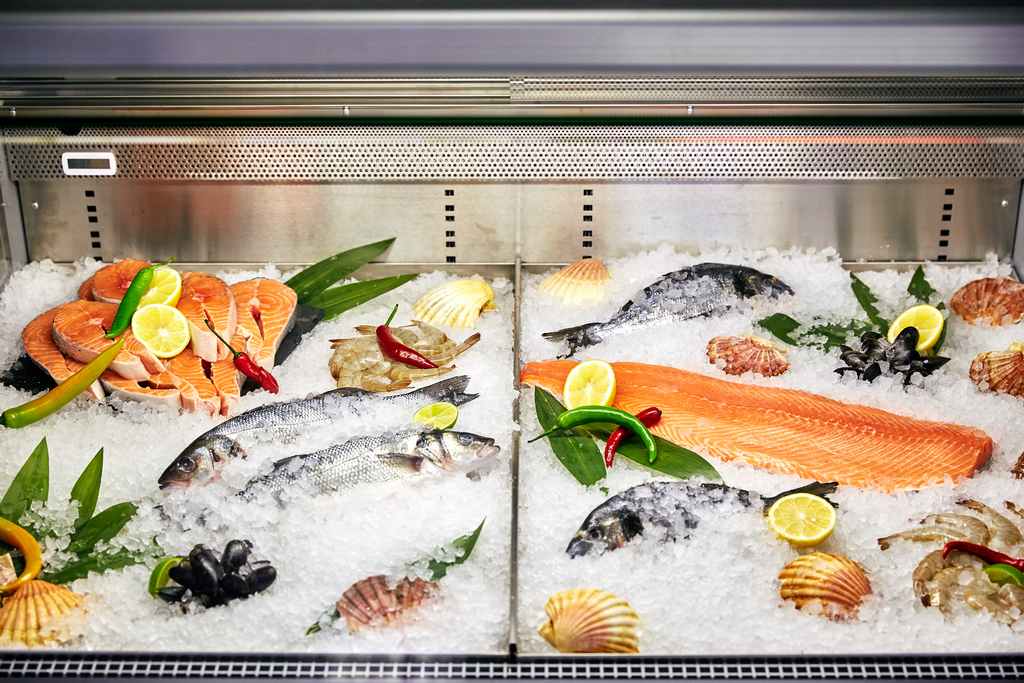By choosing your seafood more wisely, you can help stop overfishing. Being informed will help you find great-tasting seafood without getting an endangered species on your plate.
Sustainable seafood is seafood that is either caught or farmed in ways that consider the long-term vitality of harvested species and the well-being of the oceans, as well as the livelihoods of fisheries-dependent communities.

Sustainable seafood was first promoted through the movement which began in the 1990s. This operation highlights overfishing and environmentally destructive fishing methods. Through a number of initiatives, the movement has increased awareness and raised concerns over the way our seafood is obtained.
Making Informed Choices
By simply asking a few questions about whether a store or restaurant offers sustainable seafood, you can help shape demand for fish that has been caught or farmed in environmentally responsible ways:
- Where is it from? (Domestic or imported – try to choose domestic).
- Is it farmed or wild? (Try to choose wild, unless it is sustainably farmed in the US).
- Is it caught or farmed locally? (Try to choose local foods over those shipped from far away).
- How is it caught? (Ask if the method has high bycatch or habitat damage).
- How is it farmed? (If you are buying farmed fish, when available, buy seafood raised in the U.S. in recirculating systems. Tilapia, shrimp, bass, trout and arctic char are examples of fish that are being farm-raised this way).
- Is it associated with any contaminants? (Mercury, PCBs, antibiotics, etc).
Overfishing & the Sustainable Fish Movement
- 90% of the big fish are gone. Tuna, swordfish, halibut, cod, and flounder populations have been devastated by overfishing.
- The average size of the remaining big fish has been cut in half or less in the last 50 years. The average weight of a swordfish caught today is 90 lbs., down from 266 lbs. in 1960.
What happens if we do nothing?
- Many popular seafood species will likely be wiped out within 40 years with current fishing practices.
- Unless we change our rate of consumption, we’re within a century — possibly even less — of a world where jellyfish are the only wild seafood option left.
Monterey Bay Aquarium’s Seafood Watch
This video from Monterey Bay Aquarium’s Seafood Watch program highlights why such questions are important and how you can help protect the ocean just by asking your local grocery store or restaurant if they serve sustainable seafood.
The Seafood Watch program provides scientifically based recommendations on what seafood options are best for the environment. You can also download the free Seafood Watch app or pick up a consumer pocket guide today.
This pocket guide (see below) is from the Monterey Bay Aquarium on the best fish to choose, good alternatives and ones to avoid based on the environmental impact of how it was caught or farmed. Take a quick look to see if you can find your favorites.

Know Your Seafood
As part of the GO Fish! campaign for National Seafood Month, learn what are the good choices you can make when it comes to seafood, and why you should make them. This infographic lays out the difference between red list and green list seafood:

FishWatch
To learn more about seafood, check out FishWatch.gov—the nation’s database on sustainable seafood—providing science-based facts on more than 100 marine species.
- Make smart seafood choices by arming yourself with the facts about what makes U.S. seafood sustainable—from the ocean or farm to your plate.
- Get up-to-date information on the status of some of the nation’s most valuable marine fish harvested in U.S. federal waters as well as U.S. farmed fish that help meet our country’s growing seafood demand.
- Understand how U.S. seafood is responsibly harvested and grown under a strong monitoring, management, and enforcement regime that works to keep the marine environment healthy, fish populations thriving, and our seafood industry on the job.

Seafood Watch App
It’s easier than ever to get the latest recommendations for seafood and sushi, learn more about the seafood you eat, and locate or share businesses that serve sustainable seafood.
You can download the free Seafood Watch App here.
- Get free, up-to-date seafood recommendations
- Search for seafood quickly and easily by common market name
- Search for sushi by Japanese name as well as common market name
- Find restaurants and stores near you that serve ocean-friendly seafood
- Access in-depth conservation notes and reports
-
Available for iOS and Android
